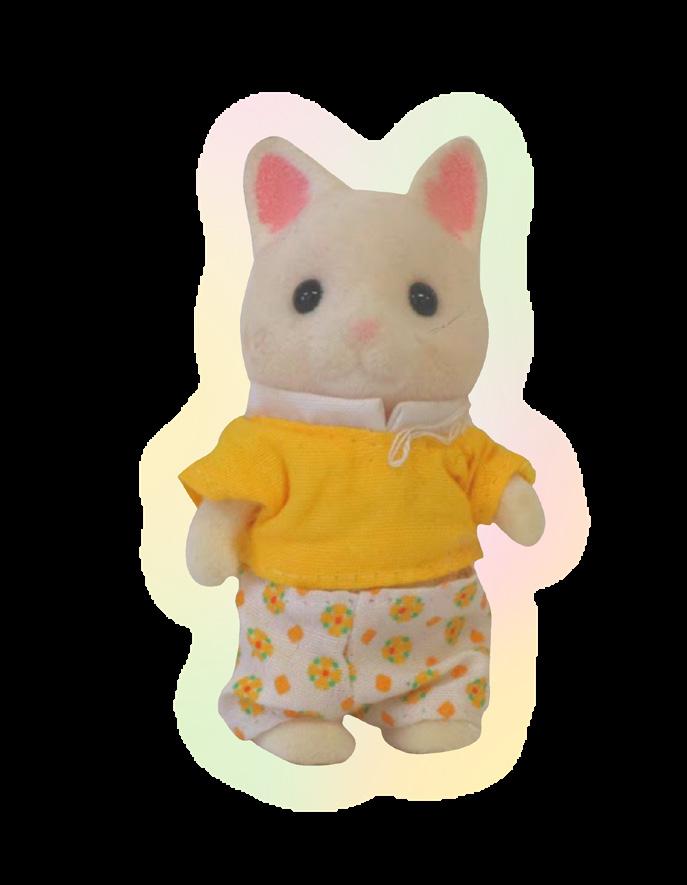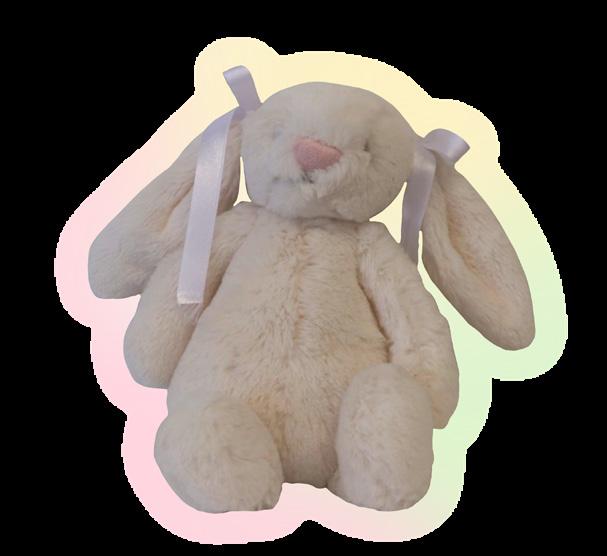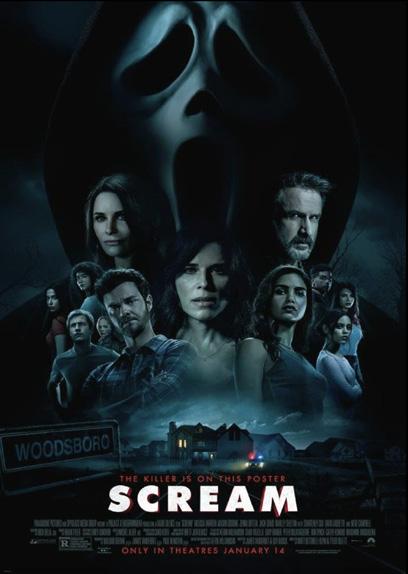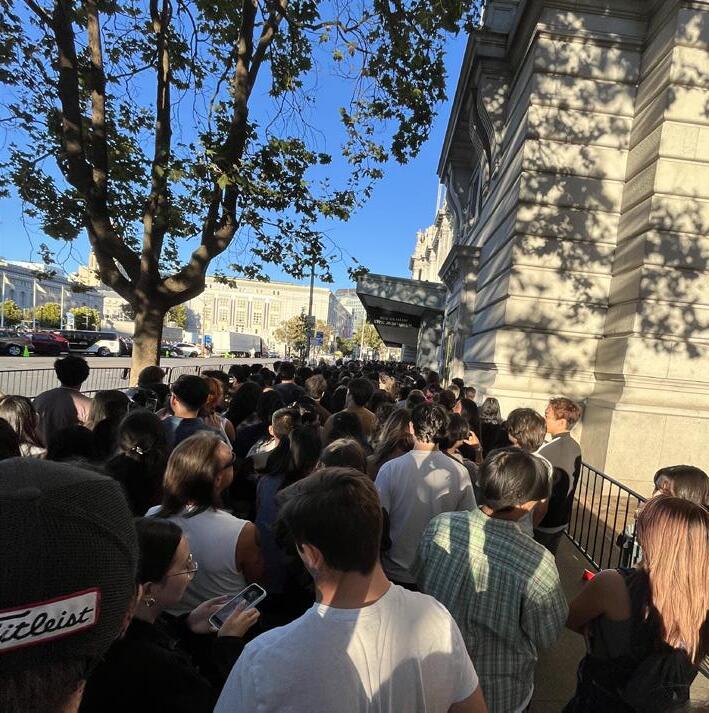
UNIVERSITY PREPARATORY ACADEMY






BY LENA NGUYEN

years ago, nervous and clueless, we never imagined it possible to be in our current roles. Yet, as the new year begins, we find ourselves immensely excited to lead a team of incredibly diligent and talented journalists as Aquila’s EICs.
With a new school year, comes new staff. In “The New Year Brings Changes to the Wellness Department”, reporter Nadia Hamilton explores the changes in both the staff and approaches of UPA’s Mental Health Department. The staff, old and new, share their goals to expand mental health awareness through increasing the accessibility of counselors and through the introduction of new “calm-down corner kits” in classrooms. Learn more on page 5.
Another addition to our UPA staff, English 10 teacher Shayan Nowzari, starts his first year already adding further perspective to the curriculum in countless ways, especially through his connection with the sophomore summer reading novel, “Funny in Farsi”. Read about his experiences of growing up Persian in the U.S., his passion for teaching about his culture at UPA and his life outside of school on page 9 in “Call Me Nowzari” by reporter Neha Jral.
Passion comes in many forms, and to the students who are rapidly leaving behind their childhood days, many carry a piece of their inner child with

on a rating adventure
with reporter Kara Luayon on page 13. From Jellycats (our personal fa vorites) to Smiskis and Calico Critters, “Tiny but Mighty” breaks down the af fordability, sustain ability and variety of the best collectibles.

all have a fear of the future. Whether it’s the increasing competitive ness in schools and the job market, or the inflation of prices prevalent just about everywhere, everything seems to be changing. Such physical changes coupled with mentality changes heavily impact multiple generations in different ways.

In “‘Stop Being Lazy’ ‘Okay Boomer’” on page 22, reporter Lena Nguyen reveals the contrasting perspectives between the older and younger generations and the differences in navigating an ever progressing life.
Finally, what would we come to if we didn’t fuel our studious minds with good food? Reporter Beza Mitachew tasted a variety of dishes from five sushi restaurants throughout “Rolls n’ Reviews” on page 27.

This year feels bittersweet knowing that it’s our last year as a dynamic duo. Even though we know we’ll eventually go our separate ways, it makes our time as EICs so much more special. We are extremely thankful to our past EICs and to all of our staff for making our experiences exceptionally memorable. We’re so eager to lead Aquila together this year, to cover diverse topics, inform the people, share essential news and fuel difficult conversations. Without further ado, we hope you en-





















Aquila is a student-produced high school newsmagazine. It serves as a designated public forum for student expression. We aim to reflect the diversity of our community and build unity through accurate reporting, in hopes that each of our readers will find an article they connect with.
From the shift of a newspaper to a vibrant newsmagazine, a broadcast channel and an active Instagram presence, we continue to innovate the way we tell stories. We do this not just because we are student journalists but because this is what it means to be a member of Aquila.

The front cover features varying ways to listen to music, including a record player, CD’s, vinyls and more. It was shot and designed by Samira Madden, Angel Froumis and Lena Nguyen. Read “On My Playlist” on page 10.
DESIGN BY SHELBY BYRD
fEATURES
CAll ME NOWZARI ON MY PlAYliST
BUIlDINg BlOCKS TO SUCCESS
OPINION
TiNY BUT MighTY fAll-iNg fOR fAShiON REAl OR IDEAl



INTO ThE lENS



ARTICLE BY NADIA HAMILTON • DESIGN & ILLUSTRATIONS BY BEZA MITACHEW
tion, or have internal hires.
ly involving new positions, staff and services. The only returning member of the team is Makenna Welch, the department’s Mental Health Coordinator.
Beyond providing therapy services, as the coordinator, Welch’s job also involves running data to obtain funding for the program through grants, in which a company provides a certain amount of money for the department. This year, grants have specifically allowed the Wellness Department to invest in “calm-down corner kits” in each classroom. These kits are cubbies of fidget toys available to students as needed during a class period. In the future, Welch hopes to use the funding to establish more Wellness Centers on campus.
“We’re also able to provide [the collected data] to UPA board members to show them how mental health is really valuable for UPA students,” Welch said. “It helps them develop skills that will allow them to be successful in their future.”
Previously, UPA held a contract with a group called Ad-
“At the end of the day, we decided that having internal hires would be better for the students in terms of continuity,” Welch said. “They would be on campus more frequently, so if something did happen for a student, they would be able to access their therapist more easily.”
The internal hires selected were Justin Janda—UPA’s new social worker—and Cathy Duran-Hulton—the school’s Social Emotional Learning (SEL) Counseling Intern. Along with Lucas Kelleher, who is officially overseeing the mental health department as its new director, Janda, Duran-Hulton and Welch make up the new Student Wellness team this year. All four members will be providing counseling services to students, which is something Welch finds extremely significant.
“Something that I recognize in the mental health field is that we have very few male identifying therapists,” Welch said. “I feel like that perpetuates the gap in male identifying individuals being able to access services.”
As a very vulnerable space, therapy can be more manageable if students are able to see

about emotions, we don’t have these conversations.”
Janda entered the mental health field about eight years ago, after getting his bach elor’s in psychology. He has done clinical work and case man agement, respond ed to crisis calls and worked with groups like the unhoused popu lation and chil dren diagnosed as emotionally disturbed. When Janda learned that there was a shortage of social workers, he decided to branch out and did his internship at a women’s shelter.

“That really helped in navigating how to work within the systems,” Janda said. “[The internship] kind of gave me a new perspective on how much of a need there is in social work.”
Along with his role of providing counseling to students, Janda also works to address community issues on UPA policies and solve issues that negatively impact people’s mental health. That can include helping parents access things like transportation, rent vouchers or housing resources. As for students, a social worker may provide services such as home visits to students who have trouble getting to school, to help them be successful.
Duran-Hulton is currently in school for her Pupil Personnel Services (PPS) credential, learning about mental health services to support students on their academic journeys. The
ments, classroom observations, stress management or career planning support. As she continues her program, she will focus on how mental health can support students in college and career counseling.
“[The Wellness Team is] here to help you figure things out,” Kelleher said. “We all really want to be here to support you on your journey. It’s hard being a teenager and it’s hard to go through a lot of change, so we’re just here to help you with whatever you need.”
Kelleher has years of experience developing schoolbased mental health programs from Chicago to San Francisco. However, he finds UPA’s department to be especially unique. In other schools and districts, despite him aiding in the expansion of their behavioral-health models, Kelleher has noticed certain require-
ments for students to receive care from a school-provided counselor.
Typically, schools only provide counseling from licensed therapists to students with a 504 Plan or Individualized Ed ucation Plan (IEP). A 504 Plan is a legal document developed to provide accommodations and assistance that ensures a child with a disability (emo tional, physical or learning) has access to public education and services. An Individual ized Education Plan is a legal document under United States law that is developed for each public school child in the U.S. who needs special ed ucation. In schools where IEPs or 504s are required to see a licensed clinician, students without such qualifications will likely be referred to a counselor or social worker.
the case to ethically and legally break confidentiality.”
Financially, Kelleher manages obtaining funding either

UPA is quite high, so his role in mitigating said cost is crucial in allowing the department to continue operating.
Welch said. “I know that UPA is doing a lot of great work at helping students reach their ac ademic potential, and that’s one aspect of a student, but aca

“[At UPA], everyone has access to counseling from an actual licensed therapist or trainee,” Kelleher said. “We also don’t turn away kids, regardless of the situation. You can access a therapist at pretty much any point of the day. It’s a completely different schoolbased behavioral health model.”
“Ultimately, what my role is, is making sure that my clinicians are able to do the most
services. As a South Asian himself, he acknowledges the stigma around mental illness and therapy in the community. He hopes to combat the narrative of shaming and isolating those who seek assistance, and instead open conversations to support those who have more
“SOMEThiNg ThAT I RECOgNiZE iN ThE MENTAl hEAlTh fiElD iS ThAT WE hAVE VERY fEW MAlE iDENTifYiNg ThERAPiSTS...I fEEl liKE ThAT PERPETUATES ThE gAP iN MAlE iDENTifYiNg iNDiViDUAlS BEiNg ABlE TO ACCESS SERViCES.” - MAKENNA WElCh
As director, Kelleher’s responsibilities include handling high needs cases, financing and counseling to a minimal extent. The high needs cases Kelleher typically has to organize are those in which patient confidentiality must be broken. Patient confidentiality is not taken lightly, but may be broken in instances where the student is deemed at risk to themself or someone else, or when law enforcement is involved in the case.
“There has to be a very good case for us to break confidentiality,” Kelleher said. “There are very clear black and white cases of breaking confidentiality, but sometimes they are not, and that is my call. I make the final decision in terms of if we have
important thing,” Kelleher said. “To provide therapy and case management to our students and families.”
Moving forward, Welch hopes to work closely with the student body as she wants to improve on giving students a voice as to what will be helpful for their mental health. A longterm goal of hers is to have more social-emotional learning in seminar classes to introduce students to healthy coping mechanisms. She believes implementing that will be a step in a positive direction to help normalize mental health.
“The overall goal of the Wellness Department is to focus on the well being of students,”
barriers.
“I want to push the idea that it’s okay to ask for help,” Janda said. “It’s okay to need ad ditional support. Therefore, we can kind of progress and help build a supportive environment for everybody.”
Kelleher agrees that a goal of the Wellness Department is to provide mental health sup port to anyone that needs it. He emphasizes how special it is that in this school’s depart ment, no student will be turned away from receiving help. He wants to continue to grow the program and break the inequity of access to mental healthcare.
“Not everyone needs ther apy, but everyone can benefit
for students, closing the loop on communication. Teachers are also able to track students’ behavior to see where there may be trends in data. Students can access the services of the Wellness Department through the UPA website, talking to any UPA staff member or visiting the Student Wellness Offices on campus. On the website, there is a self-referral form which asks students about themselves, their preferences for a therapist and what they would like to work on during counseling.
“I think it’s really brave of students to admit that they need support,” Welch said. “The reason I went into this field is because at their age, I didn’t feel like I had anyone who understood me, and I think that would have really made a positive impact on the trajectory of my life if I would have had someone.”
The way this generation values their mental health is

The Olympic Games are an international event featuring winter and summer sports, alternating every two years. Talented and driven athletes from all over the world compete in said games. The televised sporting event offers a wide variety of different sports including track and field, archery, rowing, swimming, figure skating, ice hockey and many more. The Olympic games have been around for over 120 years with the 2024 Paris Summer Olympics being the 33rd official games.
The Olympic Games have adapted over many years and continue to do so. The first modern Olympic Games held in 1896 had very limited events compared to the 2024 games, only having track and field, boxing, swimming and artistic gymnastics, for male participants only. In the second Olympic
controversy, the IOC added breaking–more commonly known as breakdancing–and sport climbing. The addition of breaking was very controversial as many individuals had strong opinions both in favor and against the idea.
According to an article in the Washington Post by Rick Maese in 2021, “[Breaking] isn’t that different from other judged events at the Olympics, such as figure skating and gymnastics, that merge artistry and athleticism.”
Some believe the sport of breaking lacks authenticity and Olympic level effort. Others disagree with breaking due to the concerns of losing its roots and being racially unjust. Believing hip-hop stemmed from black and brown communities as a way to escape socio-economic struggles to make a statement, the change in the culture
system like many other sports, making it hard to declare a winner. Ultimately, breaking will not be returning to the 2028 Los Angeles games as it did not fit the IOC vision for the games.
Like the altering of games, not all countries have been able to participate in the games. In 2000, Afghanistan was banned from the Melbourne Olympics due to the ruling Taliban’s stance on women. However, in the 2024 games, Afghan athletes were allowed to compete as they were no longer under Taliban rule in Kabul. Similarly, Russia was barred from the 2024 games for their involvement with the Russo-Ukrainian War. Other changes in the Paris games this year include the addition of new sports.
Over many years, both men and women have competed in the Olympics and have

medals to her name with the creation of five national gymnastics moves, all named after her. Retired American swimmer, Michael Phelps, who to this day, is the most celebrated Olympian of all time, has the most Olympic medals, with 28. Phelps had set the record for the most gold medals won in a single Olympic Games in the 2008 Beijing Games. Similarly, Jamaican runner Usain Bolt is the fastest runner of all time. With a record yet to be defeated, Bolt holds the world record for the 100 meter sprint with a time of 9.58 seconds. As time goes on, the current records will get progressively more challenging to break as both the standards and the performances are becoming increasingly more difficult.
Gender equality within the Olympics has been an ongoing battle. Originally, only men were allowed to compete, so it was widely celebrated when women finally were allowed and encouraged to compete. However, the battle didn’t end there. The growing controversial question of whether transgender individuals should compete in national sports post transition was answered by the IOC after long debates. The IOC allowed transgender individuals to compete in the Olympics starting in 2004. However the first trans athlete to compete wasn’t until the 2021 Tokyo Games. Laurel Hubbard, a trans woman, became the first trans athlete to ever compete in the Olympics, competing in weightlifting. Although, as of January 2024, the IOC allowed individual sport committees to determine their own policies on trans participation. In addition to the sports decision, the Paris 2024 Games required transgender women (male to female) to transition before the age of 12 to be eligible to compete. This guideline was put in place to prevent any perceived unfair advantages that would occur from male puberty. With the individual sports’ right to make the decision, at least ten sports including cycling, swimming, rugby, rowing and boxing have restricted the participation of transgender athletes.
“This framework recognises both the need to ensure that everyone, irrespective of their gender identity or sex variations, can practice sport in a safe, harassment-free environment that recognises and respects their needs and identities,” the International Olympic Committee said.
For transgender men (female to male) there are not as many requirements. It is unclear at this time what the future will hold for the participation of transgender athletes.

letes. Some athletes like American Gymnast, Frederick Richard, went as far as to order a new mattress and speak out against the quality on national television. Another athlete that got mass media attention during the 2024 games was the Olympic swimmer Henrik Christiansen from Norway. Christiansen had an obsession with the Olympic chocolate muffins served in the cafeteria and made many humorous TikToks about them, allowing himself to have fun and laugh with fans while offering fans unprecedented access to behind-the-scenes moments. The use of streaming and social media platforms allows for a broader audience to connect with athletes and be aware of game scheduling, major events, successes, failures and to come together as a community to celebrate the sports and the incredible effort and passion each and every athlete provides for their sport and country.
The Olympic Games will continue to develop over the years and it can be expected that there will be a fluctuation in the sports

Born and raised in San Diego, English teacher Shayan Nowzari starts his first year of teaching at UPA. Previously, he went to Scripps Ranch High School and attended university at UC Santa Cruz, receiving both his bachelor’s and master’s degrees in English.
Nowzari spends his time away from being a teacher socializing with friends, playing video and board games and going to beaches or cafes. He also enjoys keeping up with the current trends and events by being on social media. During class and when interacting with students, Nowzari some times makes slight mentions of memes that are currently trending. This makes his learning environment fun for the students. Coming from a Persian background, Nowzari was excited to see his culture overlapping with the sophomore English curriculum through the novel “Funny in Farsi” that he had the opportunity to read and teach this year. His mother is from Abadan, Iran, the same place of origin as Firoozeh Dumas, the author of “Funny in Farsi”. Nowzari plans to organize a call with his mother so students can learn about her viewpoint on coming to Amer ica in the same way that it was depicted in Funny in Farsi.
“It’s crazy to read someone else have a lot of these moments and feel like I have experienced the same thing,” Nowzari said.
At certain points in the book, Nowzari could feel the pride and joy the author displayed in her culture throughout the storyline, which sparked the same feelings in himself as well. The book also had many points of comedic relief that stuck out to Nowzari and helped him relate to the book.
Growing up, Nowzari wanted more of a con nection with his cul ture but being Amer ican hindered
his learning of Farsi.
“When I was younger, my family wanted me to assimilate into American culture,” Nowzari said.
When at home, Nowzari was learning Farsi and English from a young age. As he started elementary school, learning both languages caused a bit of delay. He would mix up English and Farsi at times and this caused problems for him learning English in school. When he entered middle school, he began to learn more Farsi. When he grew up and moved further away from home and family, he started to understand and appreciate his culture more compared to

helped fuel that appreciation. He is now bilingual, able to communicate in both English and Farsi.
Nowzari has always had a passion for English, especially in reading and writing.
“I feel as though there is a lot of liberation that comes from being able to learn how to read and write,” Nowzari said. “I just want to help students unlock their writing voices and be able to fall in love with reading.”

Nowzari is excited to teach his students about the main topics of the book, like learning how to adapt to a new environment, learning how to be yourself and other similar topics. Nowzari hopes to be able to teach his students the message of being able to see oneself in the book, not focusing on just the Persian side, but extending that idea into their own backgrounds.
“It feels amazing but it kind of feels like a lot of pressure too,” Nowzari said. “I want it to be something they are also interested in.”
Upon coming to San Jose, Nowzari did some research about the area. A difference in environment is what motivated him to move and join UPA.
“I really liked how diverse the student population is,” Nowzari said, “It is a big thing to me because I like to live in areas where it is not too homogeneous.”
Nowzari had also heard many positive things about the students. He was amazed at how well they balance academics and extracurriculars, and the way they lift up his spirit made it easier for him to adjust at UPA.
Nowzari’s experience with the staff, so far, has been a very good one. When he first came for interviews, he knew that they would be a supportive team, and during the short time that he’s been here, that fact has remained
Nowzari posing with his master’s degree after graduating in 2024.

ARTICLE & DESIGN BY LAYLA DANIELS • PHOTO COURTESY OF SPOTIFY
For many, music can take someone back to a certain time in their life, remind them of someone they care about, or simply provide comfort during tough times. Here are some of UPA students’ favorite songs and why.

Sophomore Celina Tandon’s favorite song is “Cornfield Chase” by Hans Zimmer. This song is from the movie Interstellar, which she first watched when she was 5. Tandon loves this song because of the memory it holds, taking her back to watching the movie for the first time in the theater as a kid.
“I remember I cried during the movie because it made me so sad to see the daughter be separated from her father and grow old to die before him,” Tandon said. “I was like 5 at the time, and I couldn’t really take it, so hearing this piano song takes me back.”


Senior Alexa Aguilar’s favorite song is “Kids” by Current Joys. It means a lot to her, especially with how she can relate to it with the current state of life she’s in, reminiscing on being younger and more carefree. The song specifically talks about topics like growing up and no longer being a kid anymore.
“I’m a senior who is scared of growing up,” Aguilar said.

Junior Marley Swann-Tarrant’s favorite song is the rock and pop classic “Forever” by The Beach Boys. She loves the song for many reasons, especially the meaning and how the song sounds when the lead singer sings in the chorus of the song. It also holds a special place in her heart because she used to listen to the song with her grandpa, and it brings back happy memories of their time together.

Another sophomore, Zoey Kwan, said her favorite song is “Takes Me Back Home” by the pop duo Wasia Project. She was already a fan of the pair’s music, and when this song came out, it immediately became her favorite. One of the reasons she gives it this title is the instrumental section, which she finds calming and relaxing. Kwan believes that this allows for the lyrics of the song to really sink in, and both components mesh well together.
“I also like this song so much because it never fails to remind of a person that I feel safe with,” Kwan said.

Ashleen Bains, a senior, states her favorite song is “Love” by Kid Cudi. Her brother introduced the song to her, which she values and will always be a core memory to her. Additionally, this song helped her get through a tough time in her life mentally. She finds that she can connect to this music and lyrics a lot because of that.
Private schools, public schools and UPA—how different schools attract different demographics and factor into
College is a notorious hot topic of high school students all across the country, the product of a simple equation engrained in all high school students: stand out in high school, appeal to respectable colleges, graduate with a reputable degree and securely establish oneself in the adult realm.
Correspondingly, guardians and students alike agonize over the proper high school to enroll in to give the student the best foundation for success. High schools often play a key role in a student’s achievements, as seen by the varying statistics of collegegoing rates (CGRs) at different high schools.
According to the California Department of Education (CDE), in 2021-22, Santa Clara public schools had a CGR of 67.1%. The average CGR for Santa Clara private schools as given by their websites was 98%. At UPA, the CGR was 95%. These varying statistics raise a question: What specifically is it that determines a high school student’s success?
High CGRs at private schools may be a product of selecting only students in the 99th percentile of testing. As stated by their websites, 64% of private high schools in Santa Clara require an entrance exam to be taken or past standardized test scores to be submitted for an application to be considered.
Junior Nikhil Bhairo moved to UPA in the second semester of the 2023-24 school year after attending the private
BY OLIVE LUONG
school, Cambrian Academy. According to their website, Cambrian boasts a 100% CGR every year since 2009. Many of their students were accepted into selective schools such as MIT, Stanford and UCLA.
Cambrian also has class sizes averaging 8-12 students per class, allowing for a smaller student-to-teacher ratio and more specialized teaching. Classes are often taught with students around a conference table rather than at individual desks. Public schools tend to have larger class sizes of around 25-30 according to ThoughtCo. UPA has an average class size of 28 as reported by their website. Bhairo believes
“You’re standing out one person out of 50 rather than in a big school with 100 good kids.”
- Nikhil Bhairo
that smaller populations aid in standing out.
“You’re standing out one person out of 50 rather than in a big school with 100 good kids,” Bhairo said.
Science teacher Katlynn Lindeman joined UPA this school year after previously teaching at the public schools Arcata High School and Maze Middle School and the private French American School of Silicon Valley. Through her experience, Lindeman found that public schools offer the most opportunity for a student to develop.
“There’s more interaction with real life,” Lindeman said.
At private schools, Lindeman also found that teaching felt more transactional than at non tuition-necessity schools.
“There, it was more like, if the parents got upset, the teachers had to follow what
they wanted because they were paying for their kid to be there,” Lindeman said.
Many times, Lindeman and her previous fellow teachers were asked by administrators to make changes to students’ grades if their parents were dissatisfied with them. While Lindeman herself never did alter a grade, she found that this made the students themselves very dishonest, as parents tended to not care about the means to obtain good grades. Similarly, Bhairo also found that some private school students developed less integrity since they grew up with more socio economic advantages.
“This is what they’ve been surrounded by their whole life,” Bhairo said. “It’s just how they are.”
Since students at public schools may not have been accustomed to relying on money to address their challenges, Lindeman found that they were more selfmotivated and hard working. At Arcata, Lindeman taught AP Environmental Science to juniors. Unlike at UPA, taking AP classes were not a requirement to graduate for Arcata students, so it was entirely their choice to take part in AP’s.
“In normal public schools like Arcata high,” Lindeman said, “ When they would get into AP, those kids really worked hard and got really good grades.”
Lindeman found that students who had the choice to take AP classes and did so, took their futures into their own hands. Thus, they would have better success at pursuing post-secondary education. Arcata’s CGR according to GreatSchools. org in the year 2022 was 81%.
After experiencing the toxic push from
administrators to change grades at parents’ demand, Lindeman was pleased with the amount of support she and her students received from fellow UPA staff, especially induction mentor Katherine Poltorak, counselor Kathryn Gong-Guy and special education teacher Lizzie Wirtz.
“[Wirtz has] been really helpful with students who need extra support,” Lindeman said. “She’s been helping them with their assignments and quiz corrections.”
Bhairo also found that there was more support for students from teachers and counselors compared to Cambrian. He finds open tutorials to be particularly beneficial.
Sophomore Kayi Sze transferred to UPA for the 2024-25 school year after attending the private school Kings Christian Academy for freshman year. Before that, Sze attended International Christian Quality Music Secondary and Primary School for primary school and United Christian College (Kowloon East) for secondary, both private schools in Hong Kong.
At United Christian College, students were entirely financially supported by the school to start enrichment projects. Sze and a few friends began a YouTube channel in which the school covered all costs for microphones and similar equipment. Sze also saw other students who learned new languages or published books, funded by the school. Between all the schools she’s been to, Sze most enjoyed this secondary school.
“It really emphasized different learning opportunities,” Sze said.
At Kings, Sze also found there to be more developmental possibilities.
“At Kings, we had a football field and a lot more sports,” Sze said. “[UPA] is a lot smaller.”
King’s website lists eight different
sports as part of the athletics they offer. UPA in comparison offers five. Lindeman also finds the lack of sports at UPA a limitation. She believes that having more diverse athletics would be beneficial to students by immersing students in different experiences and therefore giving them various opportunities to grow. Lindeman finds this limitation to be an unintentional fault.
“It’s not that you don’t want it,” Lindeman said, “it's that we don’t have the space or the materials for it.”
Other than sports, Sze also found that Kings offered a higher degree of varying classes. Despite not being a music-centered school, Kings offered multiple kinds of music classes.
“For music, we have choir, orchestra, band, and more different choices,” Sze said.
At UPA, only band is offered at different levels. Other than school classes and character, studies show that a multitude of other factors may play a role in students’ CGRs. According to Edsource in 2023, 68% of Black students and 64%
“It really emphasized different learning opportunities.” -Kayi Sze
of Latinx students statewide did not meet A-G requirements to be able to apply for college compared to 26% of Asian students and 48% of white students. 88% of foster children followed by 85% of disabled students and 82% of English learners make up the largest groups for non-completion of A-G coursework. In 2023, 57% of male high school graduates enrolled in college compared to 65% of women according to PBS.
Race, gender, socioeconomic status (SES) along with a multitude of other factors seem to consistently play a role in lower college-going abilities. The roots of these disparities may be traced back to racial inequities from redlining—the systematic denial of services to certain areas based on race or ethnicity—, gender stereotypes of women being the “brains” and men being the “brawn” and lack of belief in disabled
students to be high achieving.
UPA persistently serves these minorities, 93.3% of the student body being a racial minority and 30% of students being eligible for free or reduced lunch in the 2022-23 school year. UPA’s mission is to assist the overlooked or less supported demographic, as stated by their school profile. Despite many criticisms about UPA’s college preparatory curriculums, UPA has statistically done better than most public schools whilst serving more disadvantaged students.
Still, at some outwardly disadvantaged public schools, there may seem to be a prominent group of students with surprising and notable success stories being accepted into Ivy-Plus schools—the common umbrella name for Ivy League schools and non-Ivy League selective schools such as Stanford. This may be a result of the self-diligence of public school students mentioned by Lindeman and exceptional students standing out of large pools of average students at public schools that Bhairo noted.
Public schools—catering to the less privileged students—allow their exceptional students to stand out and appeal to colleges. Private schools—with their prestige and financial leg-up— contrastingly yet correspondingly appeal to colleges.
Despite the numerous factors that affect a student’s success and the many contrasting opinions of UPA’s opportunities to stand out, Lindeman, Bhairo and Sze can all agree that UPA counselors and student support staff play a vital role in preparing students for their future.

ARTICLE, PhoTos, ILLUsTRATIoN & DEsIGN BY KARA LUAYoN
In 2023, the estimated size of the collectable market was 294.23 billion USD. The hobby of collecting has become popular particularly among young adults. The addiction to collecting has popularized many franchises. In recent years, the rise of Dreams Inc. products such as Smiski’s and Sonny Angels have been a large topic in the collecting world. The combination of irresistibly cute design and mystery boxes has increased the demand for the products. Since capitalism and social media popularity has spiked these companies into success, which one produces a product that is the most bang for your buck? I have chosen five different companies from around the world: Jellycats, Dreams Inc. Co, POP MART, Sylvanian Families and Littlest Pet Shop. The companies will be ranked out of six stars based on price, sustainability and variety. Are their prices somewhat reasonable for the product they are selling, is the product sustainable, what impact does it have on the environment? Lastly, many of them produce collectible figurines, but are you still able to express your love for the characters outside of just having the figurines?


The toy brand owned by Hasbro was first launched in 1992. Since then, the product has gone through dramatic changes. Since their initial release, there have been seven generations of the toy with a zero generation released in 1992. The toys now are characterized by comical eyes and oversized heads. In 2012, they created an animated tv show based on the characters. Their newest release in 2024 has sparked engagement in the company.
Price: Littlest Pet Shop is on the lower sides of the price range. A pack of two-three figurines is on average $9.99. Products that come with Playsets usually cost $25-$45. They have also released blind boxes that cost $7-$9.
Sustainability: Originally, Littlest Pet Shop toys were made with PVC. But in recent years, the Hasbro company that owns Littlest Pet Shop has changed their materi al to a plastic that is easily recycled. They have also swapped out their packing for more eco-friendly options.



Variety: Littlest Pet Shops have developed many products such as books, sticker sheets and video games. They have around 3,000 characters which are made into their signature figures and plushes. Since Li ttlest Pet Shops is one of the bigger companies on this list, they have one of the largest varieties.

Sylvanian Families, otherwise known as Calico Critters, is a Japanese company founded by Taketora Maeda. The company, centered around personified animals, was created in 1985. The fuzzy collectable families have been popular among kids for decades, but have been making a resurgence due to social media. The Sylvanian family is owned by the same company that has created Aquabeads, Barcode Battler and Doraemon video games, Epoch.


Price: Sylvanian Families typically come in sets of three or four and on average are $30. The sets that come with characters and a playset are $80-$90. Individual characters with an accessory cost $12-$15.
Sustainability: Sylvanian Families and their products are made out of PVC, nylon, cotton and various other plastics. All of these materials are not great for the environment.
Variety: Similar to Sonny Angels, Calico Critters don’t deviate from the classic characters and playsets. They also sell sticker sheets on their website and have stories based on their characters’ on their website. While they have limited variety in their products, there is a large selection of animal characters to choose from.

This Japanese-based company was established by Toru Soeya in 1996. Dreams Inc. is best known for their Smiskis and Sonny Angels. Smiskis are glow in the dark figurines of a little man doing every day tasks. There are 15 different series of Smiski’s, some of which include the Moving series, Exercising series, Dressing series and more, with six variations and one mystery figurine to collect. In 2004, Dreams Inc. launched one of their most popular products, Sonny Angels. The naked baby angel dressed up in different costumes has captivated many collectors. Similar to Smiskis, Sonny Angels come in blind boxes and have many different versions to choose from and collect. Additionally, the Sonny Angel rare character is a bunny named Robbie, which many collectors strive to find. Aside from Smiskis and Sonny Angels, Dreams Inc. has many other internet famous products such as Funbaruzu Posture Pal—stuffed animals that help improve posture while you are sitting—and CABLE BITE.

Price: Smiski’s and Sonny Angels have similar price ranges ranging from $8-$22 with Sonny being on the higher end of the range. Online prices–Amazon and the Sonny Angel/Smiski website–are cheaper than in person retailers. You are also able to purchase unpackaged items for a lower price.

Sustainability: Smiski’s and Sonny's are made out of the same materials: Acetyl Tributyl Citrate (ATBC) and PVC. ATBC is often used as a more eco-friendly substitute for phthalate plasticizers, which are commonly used in children’s toys. However, PVC is one of the most damaging materials to the environment.
Maido Stationery & GiftSantana Row
Tokyo Japanese Lifestyle Urban Outfitters

Variety: Sonny Angel products don’t deviate much from staple products of collectable figures. However, recently, they released a tote bag where you can display eight Sonny Angel’s, and they also have a sticker pack available on their website. Smiski’s on the other hand have a larger variety of products. One of their most popular Smiki’s products is the Smiski Touch Light. They also have keychains, ZIPPERBITES and bobble heads. The touch light went viral because it allowed Smiski lovers to decorate their houses with the cute character.
Founded in 1999 in London, England by brothers Thomas and William Gatacre, Jellycats were made with the intention to refresh the toy market. These irresistibly cute plushies have been popping up on social media in the past few years, with some of most recognizable products being their amu seables–personified inanimate objects–and bunnies. You may have also seen their viral Jellycat Dinner Pop-Up shop in New York, and their Jellycat Cafe Pop-Up’s in London and Paris.
Price: Their biggest negative is the price. Unlike the other products that have a price range of around $8-$20 on different platforms, Jellycat prices are always above $12 across all platforms with some of the most expensive products costing nearly $90.


Sustainability: The Jellycat brand is very aware of the impact that making a product has on the earth, so they try to make most of their products by using eco-friendly materials.
Variety: As for variety, they have a wide selection of products available on their website. They sell their viral stuffed animals in the form of bags and have baby items such as blankets with their characters as well as books based after them. One of the most unique features is the customizable feature for their items. You are also able to add your name onto blankets and stuffed animals. While many of their viral items are sold out on the website you will be able to come across a Jellycat plushes in books stores or small boutiques.
SAN JOSE RETAILERS
Maido Stationery & GiftSantana Row
Kinokuniya Bookstores - San Jose
San Jose Museum of Art


SAN JOSE RETAILERS POP MART - Valley Fair Mall
The company that specializes in blind boxes was founded by Wang Ning in 2010. POP MART is based out of Beijing, China, selling a series of blind box figurines of many different characters. Some char acters are originals—LABUBU, Peach Rio, PUCKY and CRYBABY—and some are collaborations with larger companies such as Disney, The Peanuts, The Powerpuff Girls and many more. Some of their most popular original characters are HIRONO, THE MONSTERS, SKULLPANDA and DIMOO.
Price: POP MART has relatively high prices with some of their products being in the $300+ range. The items that are in the hundreds are the larger exclusive items. Their more accessible items such as blind boxes, pins and tech accessories cost somewhere in between $8-$20. The plushies, figurines and action figures typically fall in between the $10-$300 price range.
Sustainability: POP MART is conscious of the environment, which has led them to use eco-friendly packaging methods. For example, in their aluminum bags, they use CPP film, a biodegradable material and their boxes are easily recyclable. However, the products themselves are not made of an environmentally friendly material. They are made of PVC and acrylonitrile butadiene styrene (ABS).

Variety: POP MART’s main product is blind boxes with figurines. They also have action figures and stuffed animals, as well as tech accessories such as phone chains and AirPod and phone cases.










ARTICLE BY SHELBY BYRD • ILLUSTRATIONS & DESIGN BY NADIA HAMILTON
As the leaves start to fall, the cozy season begins to dawn. Lots of people are trying to figure out what to buy for this upcoming fall season. There are many fleeting trends that pass in the fall. However, there are several trends that just never seem to escape the grasp of Americans across the country. What makes them so infatuating in the eyes of our society as a whole? And what makes the short term trends not worthy of being kept at all?
Some examples of fall trends that have stayed throughout the years are Uggs, sweaters and the debatable skirt with fishnets, styled with a baggy sweater on top. Many wear skirts in the fall but several also say that it shouldn’t be a trend because of how cold it is outside. This is depending on demographics of not only age, but also what part of the world people live in due to the weather conditions.
A new fall style that has become very popular and has maintained a comeback for the last three years are leg warmers. Leg warmers are a pair of tubular knitted garments intended to cover the leg from ankle to knee or thigh. People tend to wear leg warmers with a skirt, paired with an oversized off the shoulder sweater.
However, leg warmers aren’t the only piece of clothing that has surfaced back to the top of long-lasting fall trends. Track suits have also been becoming an eye
catcher to the public. Juicy Couture (the retro one), Bobby Jack and countless types of track suits are in the TikTok shop. The nostalgia of Juicy Couture and Bobby Jack for millennials is the main reason why it has made a recent comeback.
Many teenagers began to buy from these different brands after seeing them posted all over social media by mainly females in their 20’s. Most of the teenagers on TikTok that bought the tracksuits have older sibling(s) in their 20s, which is how a lot of those specific brands of tracksuits began to resurface.
The largest long-lasting fall fashion trend are Uggs. Ugg was founded in 1978, however, their shoes did not become trendy until the early 2000’s.
The current Ugg shoe that is trendy is the Tasman slipper, a low cut slipper, with a thick platform and seaming/treading on the border of the shoe cut out. I feel like most people only like them because everyone else has them and many people are always posting “#fallfit” in the promotional video that introduces the new shoes.
Every time I’ve seen Uggs, they don’t even match with the outfit. I understand that they can be comfortable and, don’t get me wrong, they aren’t ugly, but they’re not cute enough to be a trend this popular.
However, if I had to pick, my personal favorite Uggs are the boots that stop a little lower than your shin and have two bows on the back. These boots are called the Bailey Bow II, and they have been trending since





around 2019. When I saw them in stores and all over the internet, I knew I wanted them. Most people style them with straight legged leggings and a white sweater. However, some Ugg wearers also style them with baggy bootcut or flared jeans.
Skinny jeans used to be worn with various styles of Uggs until the COVID-19 pandemic, but it was a short-term trend that I believe should have never started in the first place. They are not in the fall aesthetic and should stay at bay for a long time. Don’t get me wrong, skinny jeans aren’t the worst thing in the world as many people tend to be able to pull them off, but the fact that they were paired with Uggs is revolting. However, skinny jeans remained a long-term fall trend in most millennials’ wardrobes. Millennials wear skinny jeans that are ripped at the knee, an orange sweater, a black belt and either boots or birkenstocks. I hate these combinations and just have never understood the appeal. Most people would like to be comfortable with sweats or more breathable pants. Even leggings would make more sense to wear than skinny jeans. The fall aesthetic maintains several different sub categories. One example is spooky fall. Spooky fall consists of Halloween costumes and scary decorations. Spooky fall is personally my favorite.
But nothing compares to the halloween costumes of many different age groups. Kids of the age 12 and under tend to wear costumes such as princesses, witches, superheroes and “Harry Potter” characters. Getting into the age of teenagerhood, things tend to get more creative and more explicit with clothes. For example, some teenagers wear costumes like a cat with a tight fitting bodysuit, ears and drawn on whiskers. Another costume that has recently become popular again is a cheetah or leopard, which consists of a tight short cheetah or leopard dress and accessories made of gold or silver. These are just a few of the revived short term costume trends.


A pattern that I have noticed is that a lot of the most recent fall trends are just shortterm trends from the 90s and 2000s that are becoming popular once again. Both short term and long term of these fall trends hold no serious factors on why they do or don’t last. They vary based on the emotions of people throughout the year, and what they deem to be acceptable.



Unrealistic beauty standards effects on body image in society
AYYADEVARA


Growing up, most of the TV shows and movies I watched featured “skinny blondes” on mainstream platforms. In Disney movies, the main princesses all had nearly symmetrical and unrealistic body types. Family pressure and societal stigma mirrored what I saw on the screen within my own life. The concept of the “ideal” body has been a constantly evolving cycle throughout history, influenced by cultural, social and media shifts.
Linking back to the beginning of time, why has the body standard been a trend that is constantly changing? In the 1950s, women were often depicted in movies and shows with small waists and curves, embodying the “hourglass” figure. By the 1960s, the trend shifted to an almost twig-like thinness, while the 1970s ideal favored a slender, flat body. The 1980s emphasized athletic and toned physiques, and by the 1990s and 2000s, extreme thinness dominated beauty standards. Despite these changes, one constant throughout these eras has been the preference for a skinny or slender figure, particularly as we entered the new millennium. In the 2020s, the “slimthick” trend emerged. This body ideal is characterized by a slim build with a small waist, but with a larger butt and breasts, further emphasizing curves while still maintaining a slender overall appearance.

brings to the media. He started YouTube as a vegan who would post healthy mukbangs with his partner. After he had gained fame, his content started to transition from healthy vegan food to fast food. His content and views skyrocketed and he gained immense fame off of eating a dangerous amount of unhealthy food in one sitting. At some point in his career, he had gained a whopping 250 kgs. In 2023, he seemed to take a slight break from post ing content but came back to the media in 2024 after losing 115 kgs and transforming himself to look like his vegan self again. There are many theories about how he lost this weight but these theories are often in accurate.

In a fast paced world, something that is continuously changing the body standard is exposure. I, like others, have been frequently exposed to social media trends. The modern plastic surgery craze for instance, resurfaced after the Kardashians gained popularity in the 2000s, leading many women to seek reconstruction surgeries. Young girls, already influenced by social pressures from movies, now face these pressures in the media. Fast-growing apps like TikTok, a platform for posting videos, also promote unhealthy eating habits. For example, TikToker Liv Schmidt shares content such as “What I Eat in a Day to Stay Skinny” videos. She often consumes protein drinks and bars, and when she reaches a meal with carbs and fats, she repeatedly says, “I ate half of this” in her
On the other side of TikTok is the rise of mukbangers and feeder videos. A mukbang, a word derived from South Korean language, means eating a variety of food in big quantities quickly while recording. Nikocado Avocado is a YouTuber famous for his mukbangs and the controversy he
Another TikToker who has seemed to go down the same path as Nikocado Avo cado is Jelly Bean Sweets whose real name is Jenna. At the beginning of her journey, she was a vegan who loved to work out. After her videos started to gain more pop ularity, her content made a shift much like other mukbangers who gained fame quick ly. After she started to get millions of views on her videos, she stopped being a vegan. She has released videos saying she started to eat meat again because she liked the way it tasted and not because she gained popularity. I just find it interesting that both of these content creators have gone through a drastic change in their diet and content just because of how the media began to treat them.
This type of content can be harmful, as it promotes an unhealthy lifestyle and negative views on consuming carbs and full meals. Schmidt’s content suggests that being skinny is the only path to being the best version of oneself. This notion not only affects women’s self-esteem but also their overall health, as it encourages the avoidance of necessary nutrients.
Skinny girls, often portrayed as white, are frequently depicted in childrens’ TV shows such as “Liv and Maddie” and “Phineas and Ferb”. These shows reflect how the media consistently represents a specific body type as the norm. This portrayal can be harmful to young girls’ self-image, as it was for me.
In the movie “The Wedding Planner”, Bree Turner, who plays the bride Tracy, expresses pre-wedding anxiety by looking in the mirror and saying, “I’m fat,” despite being a size 0. Released in 2001, this film re-
ception. For instance, if an aunt is continually body-shaming herself or others, it can impact one’s own self image. At 12, my friends and I often discussed bodies, with comments like “Wow, she is kinda fat” or “Her body is the kind I would kill to have.” This constant commentary, envy and harsh self-judgment can be extremely damaging.
From personal experience, eating disorders were normalized in my life, not only from social media, but also at home. I observed how my mother and her sisters would resort to extreme diets to lose weight quickly, which fed into diet culture. My mother frequently participated in fasting, eating nothing throughout the day and only breaking her fast at night. She would often say she was fat and needed to lose weight, which influenced my perception of myself.
The pervasive diet culture in my family and exposure to social media affected my mental health and self-image. I struggled with an eating disorder for several years, feeling inadequate compared to the skinny, often white, girls I saw on TV. While this negativity was challenging, it is comforting to know that I am not alone in my struggles.

on instead [of] being stuck on something knowing that nothing in my power can change it,” Hernandez Ruiz said. Hernandez Ruiz showcases resilience and emotional maturity when dealing with uncontrollable situations by thinking of the practicality of her actions. By choosing to portance to the emotions that are driving an individual to care for a situation that may
According to the National Library of Medicine, “Unbridled imagination and the thy may represent both potential gains and losses from the evolution and ontogeny of
It’s essential to recognize that emotions, while powerful, do not determine life. They can influence thoughts and behaviors, but
Individuals have the agency to shape their emotional responses and develop coping mechanisms, according to Steven searcher specializing in anxiety and related nal of Consulting and Clinical Psychology. By practicing mindfulness and engaging al therapy (CBT), individuals can learn to manage their emotions effectively and
Building onto this concept, Hernandez fect of pessimism, tracing back to the topic

able that they are already with negative emotions which ultimately will cause them to make the wrong decision.” Hernandez
The influence of other figures in one’s life will affect their own life too. Watching family, friends or mentors go through their own experiences rubs off on people’s own tives eventually shape thoughts, beliefs and
“I think [my role model] will be my cause honestly I have never seen a person so calm in [such] heavily based emotional situations. No matter what, he always stays
Hernandez Ruiz’s admiration for her brother is one of the many testaments to the impact role models make on people’s lives.

dom passerby is living a life as vivid and complex as your own—populated with their own ambitions, friends, routines, wor ries, and inherited craziness—in which you might appear only once, as an extra sipping coffee in the background, as a blur of traf fic passing on the highway, or as a lighted window at dusk.”
Sonder is also the name of a popular musical trio composed of the popular R&B artist Brent Faiyaz as the vocalist, and two producers who go by the names Apu and Dpat. The theme of the band name is recy cled in the music as well.
Emily Yang, a sophomore, is an avid listener of the band Sonder. Yang first dis covered the trio when listening to songs recommended under Brent Faiyaz’s songs, who had decided to go solo in his singing career.
“In ‘Nobody But You’ by Sonder featur


Just like how each person is living a completely different life, each action of ours can lead to a completely different outcome. The butterfly effect, coined by meteorologist Edwared Lorenz, is the idea that events that may seem small and insignificant can have a profound effect on one’s life in a larger outcome. It is also related to how just by skipping out on a small event or action, one may miss out on an even bigger event that might have led to something amazing or completely destructive in the developed a strong affinity for this topic of the butterfly effect. Her fear of the effect jumps into how perspectives shape the way people see life. Her worries about small actions having

“I WONDER WHAT IT WOULD BE LIKE TO SEE ME FROM OTHER PEOPLE’S PERSPECTIVE. IT’S INERESTING TO THINK ABOUT. EVERYONE ELSE EXPERIENCES LIFE THE WAY YOU DO.”
- EMILY YANG
“Personally, it makes me feel vulnerable and afraid of what the future might hold, and sometimes, it makes me wonder if I did the right thing, or if I will have to face consequences in the future,” Grewal said.
The world is always running on a clock, restarting everyday for the cycle of life to repeat again. In Hernandez Ruiz’s, Yang’s and Grewal’s experiences, nothing is definite and everyone’s perspective differs by what their mind portrays it to be. So like Carrie Bradshaw from the series Sex in the City said, “...computers crash, people die, relationships fall apart. The best we can do is breathe and reboot.”


Assessing how economic, social and mentality developments affect the way older and younger generations perceive each other and the world around them
ARTICLE BY LENA NGUYEN • DESIGN & ILLUSTRATIONS BY LENA NGUYEN & OLIVE LUONG



Whether it’s Boomers, Gen-X, Millennials, Gen-Z or now Gen-Alpha, every person belongs to a generation that is predetermined depending on the years in which they were born. However, the distinction of generations goes far beyond just a birth year, also encapsulating the differences in trends, ways of thinking and lifestyles.


considering medical school as well, which has its own costs.
Private universities, especially more prestigious ones, can cost around $90,000 per year. For some UCs or public universities, prices can be near $45,000. There has been almost a 180% increase in costs from the 1980s to the 2020s.

“All generations have a divide from each other. The older you get, the stranger what you didn’t have seems,” AP Psychology teacher Loren Schwinge said. Born in the era of Millennials, Schwinge has had exposure to generations both before and after hers, allowing her to witness how her generation has grown and how later generations continue to grow.
Dating back to the late 1940s and encompassing all the way to 1980 was the generation of Boomers and Gen-X. Back then, a successful life could look like purchasing a house and starting a family early. Going to college and having an education was enough to land a job which would financially support goals and help people lead what was considered an accomplished life. However, years later, the following generations would find themselves unable to accomplish what the former had.
“For my generation, less or fewer opportunities to approach life the way our families did before us is not due to lack of want, but honestly just lack of funds,” Schwinge said.
Today, heading to the grocery store with $100 means leaving with only a handful of items. A decade ago, that same $100 could get a whole cart’s worth of groceries. Similarly, buying a house around the 1960s was significantly easier, with almost 70 per cent of the population being able to afford it. Now, less than half the population can, all due to the concept of inflation: a general increase in prices and fall in the value of money. The dollar had an average inflation rate of 3.88% per year between 1970 and now, with $1 back then being equivalent to around $7.81 today.
The economic conditions of the world nowadays contribute to the challenging qualities of life, and the victims of its effects are none other than the younger generations. Rang ing from struggles of affording housing to securing daily necessities, the experiences younger generations have in navigating through life are immensely unlike that of the older generation.
“My dad was able to put himself through college working a job at a liquor store. He paid for his entire tuition working maybe six hours four or five days a week, and he could easily make ends meet for himself,” Schwinge said. “That is not an experience I had years after him.”
Although the rising prices may be a source of struggle, the reason why college debt is a more distressing issue for younger generations is also because of increased competitiveness in the job market, and thus increased difficulty finding jobs to pay off debts.
For older generations such as Boomers and Gen-Xs, simply going through the job hunting process would be enough to almost guarantee them a position. Now, catching the eye of recruiters is not so straightforward.
As more and more people in the current era have an opportunity to gain higher education, it takes much more effort to stand out in the larger applicant pool, efforts that would’ve made one “overqualified” in the past.
“ ‘What do you have to be sad or anxious about? Look at everything I’m giving you, I didn’t have any of this, I wasn’t anxious or depressed. Why are you?’ ” -Loren Schwinge

As a senior currently going through the college admissions process, Dorcas Kakumani finds herself concerned about the issue of affording many of the schools.
“You either have to work or pull out bigger loans to pay off, which will take more time,” Kakumani said.
Kakumani is especially worried about how her debt will continue to grow even after undergrad since she’s
However, these struggles of younger generations tend to be brushed off by their older counterparts. Schwinge expresses that as a millennial, many of them along with older Gen-Z had with statements “why aren’t you having kids” and “stop being lazy,” by the older generations.
“If you’re not in an environment where you’re constantly exposed to how the world is changing, you stick with what is familiar,” Schwinge said.
As a teacher, Schwinge feels that the exposure she has to younger generations allows her to be more in touch with new slang, new apps that are popping up, new trends and overall being more aware of how the environment and people are changing. However, for her friends that are in non-teaching professions, she finds that they often don’t understand when she refers to things in the “Gen-Z way.”
of exposure to younger generations is in part due to the dispro portion in time that older and younger people spend online.
platforms such as Instagram and TikTok are a must- have for teens and young adults, where they spend hours each day scrolling.


Most of these teens and young adults have grown up with technol ogy as such an integral part of their lives and childhood that it’s easy for them to utilize it in such a carefree way.
On the other hand, Millennials, Gen-X and Boomers are different.
“We had a very basic, no tech childhood, like out on the streets playing until the lights came off. And then there was a very sudden and stark transition into the online world,” Schwinge said.

When technology first came around, it was nowhere near the efficiency it’s at today. Cell phones were paid for by the minute, the internet was slow, phones and computers could not be utilized simultaneously, MP3 players could only download around 15 songs, etc.
“I remember thinking [when the first smartphone came out] how stupid it was, being like ‘who wants that?’” Schwinge said.
In addition to increased exposure to technology that Gen-Z and Gen-Alpha were raised with, different to different levels of willingness to share one’s life in social media.
“And it’s like, well maybe you actually were depressed, or maybe you were so busy in survival mode you weren’t able to actually pay attention to your own needs. ”
-Loren Schwinge

Some social media apps are able to track all the files in a phone, including photos and hidden files. It can track the Wi-Fi configuration of homes, activity on other apps, etc.
“I
other people all over the world, new awareness was brought to topics such as mental health, depression, stress, anxiety and
“[In the past] it was not something they considered as important. They were more focused on ‘we gotta get it done no matter what,’” Kakumani said.
“A lot of the older generations are also much more resistant to getting mental health care because that itself is considered weak, and I think that’s been passed down for years,” Schwinge said.
As a result, many of the older generations find it difficult to emphasize or understand when new generations are feeling stressed, depressed or anxious.
“‘What do you have to be sad or anxious about? Look at everything I’m giving you, I didn’t have any of this. I wasn’t anxious or depressed. Why are you?’ And it’s like, well, maybe you actually were depressed, or maybe you were so busy in survival mode you weren’t able to actually pay attention to your own needs,” Schwinge said.
And while actions of normalizing self-happiness and breaking generational trauma are in part due to social media allowing such concepts to be destigmatized, there may be further underlying causes that led to the gap in understanding of mental health between older and newer generations in the first place.
Teens and adults’ brains function differently fundamentally due to how teenagers’ brains do not fully develop until their 20s.

don’t know [younger generation’s] awareness of how much is tracked on your usage,” Schwinge said. “And I don’t think you guys realize how insanely creepy it is that your phone is always listening to you.”
Phones are designed to listen to keywords in order to activate voice assistants when needed, and in order to do that, it needs to be listening all the time.
“It’s getting composited into these massive files of your profile and your existence,” Schwinge said.
Phones track eye movement, scanning how long your eyes stay on certain ads, your scrolling length, etc., which she finds very disturbing.
Older generations tend to pay more attention to such issues of privacy because they were already quite grown up when technology started becoming normalized in daily life. It was still a new concept to them, which was why they approached it with more In contrast, Gen-Z and Gen-Alphas have rarely known life without a screen, which perhaps desensitized them to privacy concerns. Nevertheless, social media especially has changed many aspects of life for newer generations. As an outlet for people to share their thoughts and feelings to

Schwinge recalls keeping a journal in her teenage years, documenting her strong emotions, situations that made her upset and more. Looking back on it, she finds it silly having emotional breakdowns at what she now considers small problems.
“There are circumstances where I as an adult do not get why something is as big of a deal to [younger genera- tions] as it is,” she said.
After the development of the frontal lobe finishes, people often forget feelings and thought processes from when they were teens, assuming that the way they currently thought was how they’d been thinking their whole life, thus creating the disconnect between older and younger people.
“But I don’t have to get it to be empathetic and compassionate,” Schwinge said.
Kakumani emphasizes that communication between people of all age groups is crucial in order to bridge the inherent gap between generations.
“Sometimes we need to put ourselves in their shoes to see what they’re going through or what they’ve been through, to not as sume things about other generations that’ll lead to resent ment, ” she said.

ARTICLE, ILLUSTRATIONS
The Scream movie franchise is a horror movie series loved by many all around the world.
Originally directed by Wes Craven, this franchise serves as an attempt to be a unique perspective on the creation of horror movies and use satire to mock other horror films. I have provided an exten-
BY CECE LE MESSURIER • PHOTO COURTESY OF IMDB
sive review on each movie, quickly realizing which movies are truly worth watching.
Scream (1996): 11.5/15 stars
Plot: 4.5 stars
Acting: 3 stars
Opening scene: 4 stars
Quote: “Please don’t kill me Mr. Ghostface, I want to be in the sequel!”
The opening scene of the original Scream entails a phone call between a young girl named Casey Becker
and a mysterious, eerie man who turns out to be a murderer by the name of “Ghostface”. This scene had an increasingly unsettling mood through the warped camera angles and aggressive dialogue which most definitely set the tone for the rest of the film.

Scream features Neve Campbell as high school student Sidney Prescott, who gradually experiences more and more ter rible things. The vibe of this film is similar to that of any typical “slasher” movie. It references many other horror movies and their similar plot lines and most definitely feels as though this movie was made to make fun of those typical cheesy horrors.
As the movie continues, the plot becomes more and more fast-paced and simultaneously more and more ridiculous. Many of the characters, throughout the film’s references to other horror movies, broke the fourth wall numerous times. However, the plot was, overall, enjoy able while also maintaining its creepy tone. Unlike the plot, the acting mostly remained at the same level of cheesiness until the end, where the killer is revealed, and suddenly the acting became signifi cantly better. Perhaps this was through the psychotic nature of “Ghostface” or through Sidney’s utter terror when she was forced to face the killer, but nonetheless it was a fun watch.
Scream 2 (1997): stars
Plot: 3 stars
Acting: 4.25 stars
Opening scene: 5 stars
Quote: “You should really deal with your trust issues, Sid”



your town, and suddenly you are attacked in front of everyone in the theater by someone who is dressed like everybody else. The only problem is, nobody noticed you as they thought it was simply acting. The opening scene of Scream 2 is by far the greatest opening scene out of all of the Scream franchise movies. The acting in this scene was incredible, as shown through the supposed betrayal as our victim mistook her killer for her significant other and the sudden realization from the audience that the woman’s murder was not fake. It most definitely relays the message about the purpose of the Scream movies: how anyone can be easily influenced by entertainment.
Scream 2 is set two years after the ending of the first film, where our main character is in University. The pacing of this story seemed to parallel the first movie, which although the entire story revolves around a mock “Ghostface” attempting to replicate the murders from the original, seemed excessive and unnecessary. However, it definitely stayed true to the original as it featured many “he’s behind you” moments that were quite unrealistic and involved the characters making many–questionable–decisions.
seemed to be an attempt at recreating the first movie in a new way, but the opening scene and the acting most definitely made up for it.
Scream 3 (2000): 7/15 stars
Plot: 2.5 stars
Acting: 2 stars
Opening scene: 2.5 stars
Quote: “Whatever you think about the past, forget it. The past is not at rest”
The opening scene of Scream 3 was quite underwhelming in comparison to the past two Scream movies (especially Scream 2). This film revolves around the idea of a “finale” in the trilogy, with the characters often referring to different aspects of a “traditional” third movie of a horror trilogy, such as sudden new background information that alters the entire plot or the killing of a seemingly important character. Being set in an entirely different town than the other films and instead being set in a movie studio creating a film about the previous movies, it’s unbelievably confusing. Additionally, the idea of the doppelgangers of the cast being in the movie as well is quite cringy.

watching (that was also in the movie, I know, confusing).


The end of the movie was much more creative, as the reveal of who the killer is had more convincing logic in comparison to the first movie. The acting in the final “fight” scene was very well executed and had incredible depictions of “Ghostface”’s psychotic behavior and Sidney’s anxiety and terror. Overall, the plot (excluding the opening scene and the final scene)
Although the film is supposed to revolve around acting, the execution when it came to actually acting for the movie, fell short. The movie seemed like an effort to make more money since the others gained so much profit, as shown through numerous cameos from people like Carrie Fisher (who is most famous for playing Princess Leia in the Star Wars movies) and Heather Matarazzo (who played Lilly Moscovitz in The Princess Diaries).
Despite the apparent negatives of Scream 3, when the final fight scene arose, I found myself on the edge of my seat. Like the others, it was very fast-paced and in the end, the trilogy was wrapped up super well and it seemed like they would stop making more movies. But boy, were we wrong.
Scream 4 (2011): 11.5/15 stars
Plot: 3.5 stars
Acting: 3.5 stars
Opening scene: 4.5 stars
Quote: “Who invited you, Trevor?”
Scream 4 begins with the concept of a movie within a movie within a movie, which I found to be really interesting and unique. It was a bit unsettling in the way that one couldn’t realize if it was the actual opening scene “kill” or if it was just another scene in a movie that people were
This film takes place ten years after Scream 3, with the original characters being in the film but not the main focus (until towards the end). Throughout the film, there is disturbing and creepy scene after disturbing and creepy scene, which, like the opening scene, you expect someone to be killed, but it doesn’t happen. It leaves you to wonder about what scene somebody will actually die (following the map of the other Scream movies), which doesn’t end up happening time and time again. As with the other films, they kept remaking the whole idea revolving around a “movie”, but I feel in this film (especially in comparison to Scream 3), the theme was significantly less intense, which I personally was a fan of. I think that the final fight scene of the flick had the most unexpected plot twist out of all of the movies, which I quite enjoyed. Overall, this movie was genuinely fun to watch, with the higher complexity of the characters and the logic that seemed slightly more apparent in comparison to the other Scream franchise motion pictures.
Scream (2022): 11.5/15 stars
Plot: 4.5 stars
Acting: 4.5 stars
Opening scene: 2.5 stars
Quote: “Well, maybe you’re the killer, because that cut deep”
Scream 5 (also known as Scream) is a reboot of the original four Scream movies featuring a new cast of characters (with the original characters being side characters). The opening scene appears like a modernized replica of the opening scene in the first movie, with it being primarily set in a kitchen but winds up being a full
travel around a house. However, what’s different is that the person in the opening scene didn’t actually die, which was a bit odd, but I appreciated the creativity.
This Scream production is a prequel to the previous movies, with the original characters being slightly prevalent but not part of the main cast. The film mostly revolves around Tara and her sister Samantha, with the reason they’re being attacked is because Sam is the daughter of the killer in the first movie (not a spoiler). The plot is a remake of the original film but with the new characters, which was actually quite a good idea and entertaining to watch.
Over the course of the film, the various murders that occurred seemed to be executed more creatively and appeared to be more of an effort to make the movie actually good instead of simply a traditional slasher movie (like the others). There were lots of moments where a character would open a door and you would expect the killer would be behind it but they wouldn’t be, which made it more ominous and suspenseful. Also, this was the first of the films to have realistic injuries (specifically with Tara), and that combined with the fabulous acting definitely improved the quality of this production.
which allowed everything to come together nicely and make for a great sequel. I loved the constant connections to the first movie and the ending being in the same house as the original, really allowing everything to come together very nicely and make a great prequel.
Scream VI (2023):
11/15 stars
Plot: 3.5 stars
Acting: 4 stars
Opening scene: 3.5 stars
Quote: “I didn’t want to spend the rest of my life afraid of monsters. I wanted the monsters to be afraid of me”
The opening scene of Scream
movies is taken to a big extreme in this film, with there being a large shrine of the previous movies where the big final scene took place. The constant plot twists and red herrings (especially at the big reveal) was very fun to watch and left me on the edge of my seat. Although there isn’t a large amount of things to say about this film, I did thoroughly enjoy this movie and I think it closed out the Scream movies quite well.

6 was interesting because it was immediately doing the entire bit about analyzing movies and wound up becoming a quite unexpected kill. It was odd because after the very first kill, the killer was instantly revealed, which was confusing. However, it eventually led to the demise of that killer and the beginning of yet another production in the Scream franchise.

The ending and the character redemption arc were a great wrap-up to the movie, and while the identity of the killer didn’t make much sense, it was still quite entertaining. I loved the constant connections to the first movie and the ending, set in the same house as the original,
Scream 6 is the sequel to Scream 5, following the same main cast from the previous film, except this time without our star, Sidney Prescott. The plot features people dying on a much larger scale, with many more dying at a time instead of being picked off one by one. The fantasizing about
For which movies are worth it, definitely watch the original because although it is rated lower compared to the others, the first movie in a franchise tends to be the best and I feel it lives up to that expectation only because of the fact that it is a silly slasher who-dunnit film. Only watch Scream 5 and 6 if you have seen all of the other Scream movies because if you’ve only picked and chosen the movies it won’t have the same impact. Scream 2 and Scream 4 are worth the watch, but don’t bother with Scream 3 because the concept of the movie was not living up to expectations and it’s not that significant to the rest of the movies anyway.
Overall, the franchise definitely had its ups and downs, deaths and survivals, love and heartbreak, but the common factor was the effect of the movies. Its universal message and never ending story certainly had its effect on me, and with Scream 7 being announced, who knows how many more twists and turns these characters can give us? With this, I close with a simple question: What’s your favorite scary movie?





ARTICLE & PhoTos BY BEZA MITAChEW • ILLUsTRATIoNs & DEsIGN BY KARA LUAYoN
The Bay Area is home to a huge variety of sushi restaurants locally known around the area. With so many sushi options available, it can be hard to find one that stands out. I reviewed five sushi restaurants and evaluated them out of ten based on the appearance of the restaurant (out of two), taste of the food (out of three), customer service (out of two), quality of the fish (out of two) and how affordable it is (out of one). At each restaurant, I tried their most popular dish, a collection of their sashimi and two-three signature rolls. Additionally, I added an honorable mention that should definitely be tasted.

Mizu Sushi Bar & Grill has two locations in San Jose, however one is currently closed. The other is located on Winchester Blvd, and is about five minutes from Santana Row. Right at the entrance of the restaurant, I noticed a bright blue colored sign that had a vibrant vibe to it and LED lights dangling down the sides. At first glance, the restaurant looked chic and classy. Upon entering the restaurant, it was spacious, yet comfortably sized, it had bright lights and a kitchen towards the back where you could see the chef making food. The inside lacked lots of decorations and felt rather plain compared to the outside, but was relatively clean. The restaurant was not too crowded when I went on a Saturday night around 8 p.m. The menu had an abundant variety of rolls and grilled food as well. I ordered the Yami Yami roll, the chef’s selection of sashimi, the Rainbow Blossom roll and the Red Dragon roll. The Yami Yami roll was their most popular dish, which contained deep-fried white fish, topped with chopped tuna, tobiko and salmon mixed in their famous thick YumYum sauce which is a spicy sauce that includes mayo, sriracha and ketchup that’s typically served in Japanese steakhouses. When taking my first bite, the fish melted in my mouth and all the flavors intertwined together creating a delicious bite. The chef’s selection of sashimi contained three pieces of tuna, yellowtail and salmon. The tuna tasted good but was a little dry. I could tell it wasn’t as fresh as it could be. The yellowtail lacked

Kenzo Sushi has one location on Snell Ave. Upon entering, you are greeted with a waiter that seats you at a table. The restaurant is spacious with both booths and tables as an option. It has a very nice and warm feeling when you enter. Kenzo has an All You
flavor, but the salmon tasted very buttery and soft. The Rainbow Blossom roll had a colorful arrangement of pink, green and orange sushi rolls. The taste was mediocre since it contained deep-fried scallops on top of the dish, which I believe overpowered the flavors of the whole roll. The Red Dragon roll, on the other hand, was amazing. It contained shrimp tempura, cucumber, topped with spicy tuna, tobiko, green onion, unagi sauce, spicy aioli and red onion. At first, all the flavors really complimented each other, but the red onion ruined the dish, due to its overwhelming pungent flavor. The total price for all four of these dish which I believe is an excellent deal everything I got.
Appearance of the restaurant: 2/2
Customer Service: 2/2
Taste of food: 2.2/3
Quality of fish: 1.3/2
Affordability: 1/1
Overall ranking: 8.5/10

Can Eat (AYCE) option for both dinner and lunch. Since I visited around 5:00 p.m., it was considered dinner time. There are two AYCE options: AYCE and AYCE premium. The only difference with the AYCE premium is it included sashimi. The menu is also through a QR code and ordering is digital. I ordered the Kenzo Roll, Golden California Roll and the Sashimi combo. The Kenzo Roll contained shrimp tempura, cucumber and spicy tuna. This roll looked very flavorful with the ample amount of sauce and shrimp they put around the dish. The flavors all linked together perfectly and it had the correct serving of rice. It was one of my favorites. The Golden California roll was deep fried and served with sauce. This roll looked very interesting but unfortunately, the flavor was disappointing. It tasted like deep-fried rice with no flavor. I could barely even taste the avocado or fish. The Sashimi

combo came with two pieces of salmon and two pieces of hamachi. The salmon was bright orange, tasted very fresh and was very soft. The hamachi had a nice warm pink tone and tasted raw, fresh and clean, which is exactly how it’s supposed to taste. Since it was an AYCE restaurant, the cost was $35.95 per person, which is a great price due to the quality and abundance of food.
Kura Revolving Sushi Bar has three locations in the Bay Area. The one I went to was located in Cupertino. When you enter, it’s very small and no one greets you; it is a self-serve type of restau rant. There are two different types of seating: standing chair and a booth. In the middle of the restaurant, there’s a revolving table with different plates of sushi that have the types labeled on them. The por tion is meant to be eaten in one bite. One really positive aspect is that all sushi plates are $3.90. After you finish, you put the plate down a slot, and keeps count of the total amount of plates. Once you get to a certain number, you earn a prize, which is super fun and actually makes you want to eat more. I tried their Kura Roll, Tiger Roll, Rainbow Roll and Tuna and Salmon sashimi. There was no waiter, and drinks came from a ro was circling around the restaurant. The rolls come around in a con veyor belt and the cover automatically lifts up. If you want a roll or have a special request, there’s an iPad where you can order the food, which arrives on a private conveyor belt above the main one. The Kura Roll contained avocado and shrimp mayo wrapped in Kura specialty sushi rice and dried seaweed with seared salmon topped with sesame and lemon. The roll looked very similar to a California roll. The taste was good, but the flavors didn’t combine well; they blended to create a bland flavor. The Tiger Roll contained avocado and shrimp mayo, dried seaweed with shrimp drizzled in spicy mayo and a sweet soy sauce topped with sesame
Appearance of the restaurant: 1.5/2
Customer Service: 2/2
Taste of food: 2/3
Quality of fish: 2/2
Affordability: 1/1
Overall ranking: 8.5/10
and jalapeño. This roll looked very colorful and appetizing. When I took a bite, the spice and crunch from the jalapeño immediately hit, and it added a nice sweet spice to the roll. All the flavors in teracted very well with each other, though there could have been a little more creaminess. Next, I tried the Rainbow roll which condo and shrimp mayo with red snapper, yellowtail, salmon, tuna, shrimp and avocado topped with sesame. This roll looked very different from other rainbow rolls I have gotten. The fish was cut in half and two different types of fish were on one roll, which was very interesting and unique, however, the taste of the fish definitely wasn’t fresh and there was too much rice, which overpowered the whole dish. The Tuna and Salmon sashimi was bright in color, which is a great aspect to look for. The taste of the fish was very soft and




thing, was $45.69. which is the cheapest price I have ever paid for sushi. Even though the sushi could have been better, the price and taste were exceptional.
Appearance of the restaurant: 1.5/2
Customer Service: 2/2
Taste of food: 2.2/3
Quality of fish: 1/2
Affordability: 1/1
Overall ranking: 7.7/10
Ozumo is a high-end contemporary Japanese cuisine restaurant that has 2 locations in the Bay Area: one in San Francisco and the other in Santana Row, which is where I went. The restaurant is located directly on the strip of Santana Row, right next to Hotel Valencia. I went on a Saturday night at 8:30 P.M. When I entered it was fairly empty, which was the first red flag of many. Inside, the restaurant had a wood, chic theme to it with a huge bar and bamboo decor. It was quite spacious and offered outdoor seating as well as red lanterns and flowers, which was really enchanting. Towards the end of the restaurant, there’s clear glass where you can see the chefs prepare your dishes. The waiter was quite nice and guided me promptly to my table. There was a plate with chopsticks and a dipping plate, ready when I arrived. The overall vibe of the restaurant was high-end. I ordered the Spider Roll, Rainbow Roll, Yaki Roll (their most popular dish) and Juryo (sashimi platter), though the food took a long time to arrive. The Yaki Roll was a baked sushi roll that contained scottish salmon, snow crab, avoca-
do, spicy mayo, un agi sauce, tobiko, sesame seeds and chives. The roll was good but there was no wow factor, and was very basic to say the least.
The Spider Roll con tained breaded crab, avocado and 28 | ARTS & CUlTURE


spicy mayo. In terms of appearance, this roll looked plain and unappetizing, which matched its dull and flavorless taste. The last roll I tried was their Rainbow Roll, which contained a snow crab roll with sliced maguro hamachi, salmon, unagi and avocado. It looked very bland and the color of the fish was dull, which is a huge tip-off when determining the quality of the fish. The flavor was extremely mild and it just tasted like rice. Their sashimi, Juryo, contained hamachi, sake, hotate, hirame and shiro maguro. Similar to the previous rolls, the sashimi was faded in color but presentation wise, it was sliced carefully and had a cute cucumber and lemon decoration. The sashimi didn’t taste fresh, but really slimy and unpleasant, which was disappointing. The total price for
Sushi O Sushi is located on El Camino Real Rd. in Santa Clara. They only have one location and are locally owned. When you enter, there is a small waiting area with seats. The kitchen is behind it, with a clear glass window, within which you can see the chefs as they prepare the sushi. The restaurant is relatively small compared to other restaurants, but it has a warm and cozy atmosphere. The menu is huge with over 82 different kinds of rolls and pictures of all the foods, helping you decide what to order very easily. I ordered their chef’s collection of sashimi, the Cherry Blossom roll, Lion King roll and Orange Blossom Roll. The food came very quickly, I only had to wait about ten minutes for one roll! Their sashimi had hamachi, salmon and albacore. It came with a side of miso soup, a plate of rice and a side salad. The sashimi was bright appearance-wise and the taste did not disappoint. The fish was cut very precisely and tasted fresh and clean. It was honestly one of the best sashimi I have ever had. Their most popular dish is the Lion King Roll, which contains imitation crab meat, avocado, salmon, sriracha aioli, flying fish eggs, unagi sauce and green onion. This roll was also baked, which meant it was bubbling and hot, with the salmon being baked over the roll. It also had orange sauce all over. When I took a bite, the salmon combined with the sriracha aioli was one of the best combos I have ever had in my life, and all the flavors matched perfectly. The next roll was the Cherry Blossom roll, which contained tuna, avocado and salmon. It had a nice pink
all four dishes including drinks was $185.94, which was extremely high compared to the taste of the dishes. Overall, the food didn’t taste appetizing at all.
Ranking:
Appearance of the restaurant: 2/2
Customer Service: 1.5/2
Taste of food: 1/3
Quality of fish: 0.5/2
Affordability: 0.5/1
Overall ranking: 5.5/10

color to it, however the avocado was a little overpowering and the roll was kind of basic, but still good. The Orange Blossom roll contained salmon, avocado, lemon and unagi sauce. The roll had a pleasant orange color with lemon slices on top. When I took a bite, I immediately got a bitter taste from the lemon. It was unpleasant at first, but it had a citrusy taste to it after, and paired well with on and avocado. The total price for all these dishes was $116.80, which is a great price.
Appearance of the restaurant: 2/2
Customer Service: 2/2
Taste of food: 2.5/3

Quality of fish: 2/2
Affordability: 1/1



Overall throughout my journey of all these five sushi restaurants, Sushi O Sushi was the best out of the five due to the high quality fish, excellent customer service, flavorful food and the affordable price.




Food has the power to trigger feelings of nostalgia and emotional comfort, providing a sense of security and familiarity during hard times. It has the ability to provide flashbacks of favorite childhood memories and can give a sense of fullness and warmth. People come and go, but food stays forever!
Spanish teacher Aimee Ve rapinto often cooks for herself and her family. Her favorite comfort food which she has passed on to her children is tus can vegetable bean soup with sourdough bread. Growing up, she always loved drinking this soup in the winter, with both her parents cooking it for her. The soup’s warmth brings her comfort, soothing the chill she experiences during that time of year.
and a little bit of a cheesy flavor to it,” Verapinto said.
Depending on her mood, she might add chicken to her soup. To put it all together, she loves to butter the sourdough, take


eats the dish, Shah said, “not often enough.”
her nine-year-old self trying it when her mom made it for her for the first time. Whenever she eats the dish, she is reminded of her vacation in the Philippines, which is one of her favorite memories. She prefers eating it alone as it’s one of her favorite foods and she refuses to share it. Champorado is a treat for her, and she eats it the most when she is sick as she finds it the most comforting then.
“It’s warm when you are feeling cold, it warms you up,” Verapinto said.
The first time Verapinto made this soup was with her sister. They found the recipe on Food Network, and decided to try and recreate it. She enjoys sharing it with others, it’s a way she expresses her care for them. During the winter, she makes the soup at least once a week, especially on rainy days. Her favorite way to drink the soup is at home, in front of the television, cuddling in a blanket. She enhances her soup by simmering the rind of old parmesan cheese in it and then removing it before serving.
“This is like the real secret, you take the old rind of parmesan cheese, like the hard part and you stick that in there and let it simmer, and it adds salt
food. More specifically, vegan dark chocolate with a filling, such as jelly. When she was little and would go grocery shopping, she was only allowed to buy one chocolate item. That molded the idea to her that chocolate was a special treat.
Chocolate chip cookies were strongly associated with Sebek as a child. During special occasions, she would bake a batch of cookies with her dad or grandma. She loves to share her special treat with others or just eat it by herself and she always has chocolate on hand.
“I don’t ever want to be in a place where there isn’t chocolate, that doesn’t seem like a safe space to be,” she said.
Sebek finds comfort and security in her chocolate, using it to make many treats including pie, cookies, cakes, brownies,
Shah tries to eat the biryani at least once a month. Her favorite way to eat it is alone while rewatching an old childhood movie on a rainy day.
Growing up, her parents were vegetarian, so her friends were the ones who introduced her to lamb biryani. Before lamb biryani, her favorite was chicken biryani, but after she tried it with lamb, she could not go back; she even introduced it to her daughter.
“Champorado is one of those dishes that has a better flavor when it is homemade [and] made by your loved ones,” Ananayo said.
Champorado is a popular Filipino dessert, but Ananayo has a unique way of making it. She hates ordering champorado, so whenever she craves it, she asks her mom to make it. The first thing her mom does is make rice porridge, which she adds cacao to, followed by condensed milk, regular milk and evaporated milk. Ananayo encouraged her cousin to try this dish. Her cousin now thinks this is one of the best desserts.


it the most during the Christmas season as Christmas holds the most sentimental value to her. Her mom makes her the dish often. She was first introduced to the dish when she went to the Philippines with her family. She vividly remembers
“It is really comforting and once you discover it, it’s something you always find yourself going back to,” Ananayo said.
Food holds important significance to everyone, it provides comfort, brings back memories of nostalgia and is an outlet to


“Are You Bored Yet?” You should go to a concert!
Formed in Los An geles, California, the male indie rock band Wallows is currently touring the world for their third released album “Model” that they dropped on May 24, 2024. Their band consists of three members, Dylan Minnette, the lead singer and rhythm guitarist, Braeden Lemasters who plays bass guitar and drummer Cole Preston. The three boys have been playing music together since age 11, where they started out at a San Fernando Valley music program, “Join the Band”. Originally the band debuted under the name, “The Feaver” in 2010, when they won 98.7 FM’s RockStar battle band competition. Later on, the group was able to perform at 2011’s Vans Warped music festival, which was their launch into fame. In 2014, the band changed their name to “The Narwhals” and published their first self-titled album EP, but later decided to change their name again. Wallow’s current name originated from a popular video game they played as kids called “Tony Hawk’s Underground”.Wallows is the location that Tony Hawk’s group used to skate inside during the game in the 80’s, which the boys thought was cool, and inspired them to change the band name in 2016. In April of 2017, the in dependent band started
BY AUBREY PHUNG
releasing more songs, some even reaching as high as number two on the Spotify Global Viral 50 chart. Throughout the past few years the band has released three albums, two EP’s and 13 singles.
On Feb. 1, 2024, Wallows announced they would be dropping a new album, which raised suspicions amongst fans that they would be going on tour. Finally, on March 11, Wallows officially announced their 2024 world tour dates. I saw the post on Instagram of the tour dates and immediately knew I wanted to go, as I’ve been listening as a fan since 2018, and missed their last world tour during 2022.
On March 12, at 10 p.m., subscribers on Wallows’ newsletter from their website got a presale code to buy tickets online on Ticketmaster, and for public sale, it would be on March 15.
After waiting for the presale queue on Ticketmaster to pass, buying tickets was fairly easy as not many people were trying

There was no reserved seating guideline either. The cost for two GA tickets ended up being $172, $86 for each ticket.
On the evening of Sunday, Sept. 8, I attended Wallows’ “Your Apartment” concert at San Francisco’s Bill Graham Civic Auditorium with my sister.
Doors were set to open at 6:30 p.m., but when I arrived at 6:25 p.m., they were already letting people inside. Since seats were first come first serve unless you had VIP, this affected my chances of getting a good spot. Although people were already going inside the arena, there was still a considerably large line of people waiting outside that wrapped around the Civic Center’s Plaza. Before we were allowed to go inside the building, security checked our bags, and we stepped through a metal detector for safety.
Right when I was through the doors, my sister and I used the bathroom so that we wouldn’t have to go later, then ran downstairs to the general admission pit to secure a spot as close as we could to the stage in the sea of people gathering quickly. In only a few minutes, the pit kept growing bigger, with people pushing through from behind. Some were trying to get to their friends, and others just wanted to try being closer to the stage, which was remarkably annoying since a lot of people were there before them.

As a person that is quite shorter than most people, it

er people were standing in front of me. I was wearing boots with two inch platforms which definitely helped my vision of the stage, but still wasn’t the best, so I had to settle with what I could see.
By the time we found a spot, it was around 7/7:30 p.m., and the opening artist Benee came out. Her set consisted of 9 songs, but because I didn’t know much about her, I wasn’t sure what to expect. Upon her entering the stage, the audience was pretty enthusiastic, and many started to cheer for her. I had heard two songs by her before on Tiktok a few years ago during

2020. “Supaloney”, blew up as a viral dance on the app and “Glitter” also became a popular song audio. The New Zealand singer’s music sounded very alternative, with a mix of indie and bedroom pop.
Although I didn’t know much about the artist, she had a lot of great energy, and seemed super hyped to perform. Her voice was rather impressive, as she sounded exactly like the song’s recording. When she played the songs I had never heard before, I tried to enjoy it as much as I could and thought maybe I should give her a listen when I got home, because her music was actually something I would like. I thought her style was interesting, as it was more alternative, and it caught me off guard a bit because I was unfamiliar with what she looked like since 2020. I noticed some of the crowd knew her songs, and sang along with her, but the majority of the crowd didn’t know them. Overall, she seemed super rad and outgoing, which was a perfect start to the Wallows concert.


out onto the stage from the back. The crowd went wild while they performed their first song “Nothing Happens” from behind the screen but you could see their shadows from behind. “Nothing Happens”, transitioned into Wallows’ next song, and their album name “Your Apartment” shown on the screen that had previously covered the band, and unveiled them all. The crowd was beyond thrilled, screaming and cheering for them.
After Benee’s performance, it segwayed into a 30 minute intermission for Wallows to set up their stage and gear while background music was played as entertainment. During this, someone in the crowd lifted their phone high in the air and started playing the Dress to Impress on Roblox, and the crowd started cheering or booing rating peoples outfits. This was pretty random, but it kept everyone in a fun mood since people were getting Eventually, Wallows came
Behind them, the wall’s background was covered with twinkling and colorful flashing bright lights that changed colors throughout their songs. In one song, the background turned into a yellow and purple sunset, which was pretty sick. All in all, their visuals were phenomenal and unique. It created the perfect indie/rock atmosphere which matched the band’s vibe perfectly.
Midway through the concert, the band walked from the main stage to another smaller stage to perform a few songs. For us, during “She’s an Actress”, Dylan Minnette had to walk into the pit and through the crowd of fans to get to the second stage. The whole interaction was pure chaos. As the lead singer walked amidst the sea of people, he and everyone around him were getting shoved and pushed from every direction. A security guard followed close behind to help guide Dylan, as well as for protection. This experience would’ve been a complete nightmare for claustrophobic people. I think most people were so caught up in wanting to get close to the singer that they lost all sense of etiquette, leading
to madness. Despite this, I got extremely lucky with where I was standing, because though I wasn’t even able to move in the crowd much, he ended up walk ing right beside me and I got super close to him to the point where I was able to touch his arm.
When he walked past, he seemed dis tressed and kinda agitated. I wasn’t sure why, but once he got to the other stage, he re vealed that some one in the crowd tried touching him inappropri ately, which the crowd was ap palled by. To me, that is complete ly unacceptable and disgusting. I felt like the crowd was being very disrespectful, and didn’t have any concert etiquette towards the mem bers.

When the Wallows returned to the main stage, a lot of people from the back of the crowd were pushing everyone at the front forward, because now they were further behind. This caused the crowd to feel even more
back, but a lot of people in the back didn’t listen, as they wanted to be closer to the stage. Additionally, Dylan told security to pass out water bottles for those who needed it since people were getting overheated which was very considerate of him.





Afterwards, they played three songs, as the oth er members went around the crowd through a different route in order to avoid the commo tion of the crowd. Because they moved to a stage that wasn’t highly elevated and was lo cated all the way in the back of the ven- ue’s pit, it was hard to see any of the band performing, unless you were super close to them. So I basically didn’t see anything, and just tried enjoying the music instead of focusing on recording or taking pictures. My sister and I also took this as an opportunity to try getting closer to the main stage since we couldn’t see anyways and knew the band was going to move back to the main stage again later.

The band ended up performing 23 songs in total, with “Are You Bored Yet?”, their most popular song, as the closing act. This was played instead of “Only Ecstasy” as time got cut short due to all of the complications that occured because of the crowd. This was probably the best moment during the whole concert because everyone was psyched, since most people knew all the lyrics. It was very fun to be able to sing along with the band. I had waited to see this song live for the longest time since I had started listening to it, which was kinda surreal for me to experi-


each other so that we wouldn’t get separated. Even the band knew people were squashed and told people to take two steps
Although the audience was mostly unpleasant and somewhat ruined the overall mood, I still had an excellent time being able to witness one of my all time favorite bands perform live. I would definitely attend another concert of theirs in the future, if given the chance. Hopefully next time the crowd isn’t as unpleasant, since it may be overwhelming for some, especially if it’s your first time going to a
Just remember though, have fun at a concert, you’re only there once, and you may not get the chance to go again. So don’t get caught up in the smaller things, or constantly feel the need to record. Live in the moment, and make the best of it!
